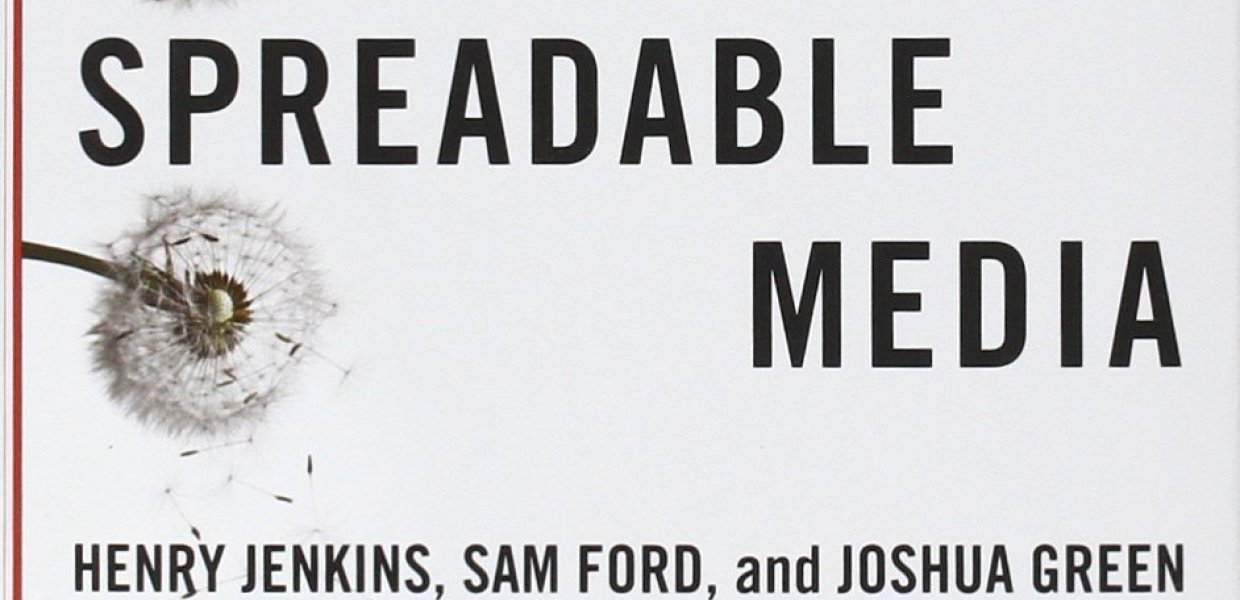This excerpt from "Spreadable Media: Creating Value And Meaning In A Networked Culture" (by Professor Henry Jenkins, Sam Ford, and Joshua Green) appeared as an article in the winter 2013 edition of the USC Annenberg Agenda magazine.
Content circulates in multiple ways today, from top-down to bottom-up, from grassroots to commercial. As we explore circulation, we see the way value and meaning are created in the multiple economies that constitute the emerging media landscape. Our message is simple and direct: if it doesn’t spread, it’s dead.
We don’t mean the kinds of circulation that have historically concerned publishers—that is, how many readers pick up this morning’s edition of The New York Times or The Wall Street Journal….Like the “impressions” online publishers tout, such “circulation” is concerned with making audience members into receptacles for mass-produced and mass-distributed content: as eyeballs in front of a screen (in television terms), butts in seats (in film or sports terms), or whatever other body parts media companies and brands hope to grab next. But those definitions of “circulation” are really talking about distribution, where the movement of media content is largely—or totally—controlled by the commercial interests producing and selling it. These logics of distribution best apply in a broadcast media world, where a small number of producers—Random House, or CBS, or Warner Brothers—create discrete and finished products for mass audiences.
Instead, our book, “Spreadable Media” examines an emerging hybrid model of circulation, where a mix of top-down and bottom-up forces determine how material is shared across and among cultures in far more participatory (and messier) ways. The decisions that each of us make about whether to pass along media texts—about whether to tweet the latest gaffe from a presidential candidate, forward a Nieman Marcus cookie recipe email, or share video of a shoplifting seagull—are reshaping the media landscape itself. This shift from distribution to circulation signals a movement toward a more participatory model of culture, one which sees the public not as simply consumers of pre-constructed messages, but as people who are shaping, sharing, reframing and remixing media content in ways which might not have been previously imagined. And they are doing so not as isolated individuals, but within larger communities and networks, which allow them to spread content well beyond their immediate geographic proximity….
While many content creators are struggling with the growing prominence of such grassroots audience practices, an array of online communication tools has arisen to facilitate informal and instantaneous sharing. These platforms offer new capacities for people to pass along media artifacts—and, in the process, seek models to generate revenue through the activities of their users. However, while new tools have proliferated the means by which people can circulate material, word-of-mouth recommendations and the sharing of media content are impulses that have long driven how people interact with each other. Perhaps nothing is more human than sharing stories, whether by fire or by “cloud,” (so to speak). …Our approach doesn’t presume that new platforms liberate people from old constraints but rather suggests the affordances of digital media provide a catalyst for reconceptualizing other aspects of culture, requiring the rethinking of social relations, the re-imagining of cultural and political participation, the revision of economic expectations, and the reconfiguration of legal structures.
…Spreadability refers to the potential—both technical and cultural—for audiences to share content for their own purposes, sometimes with the permission of rights holders, sometimes against their wishes. As we have been working on this book, some have challenged the term “spreadable,” suggesting it sounds more appropriate for describing cream cheese or peanut butter.…However, think of “spreadability” as a placeholder, perhaps like a stub in Wikipedia; it is something we can shape a conversation around.
COURTESY NYU Press






